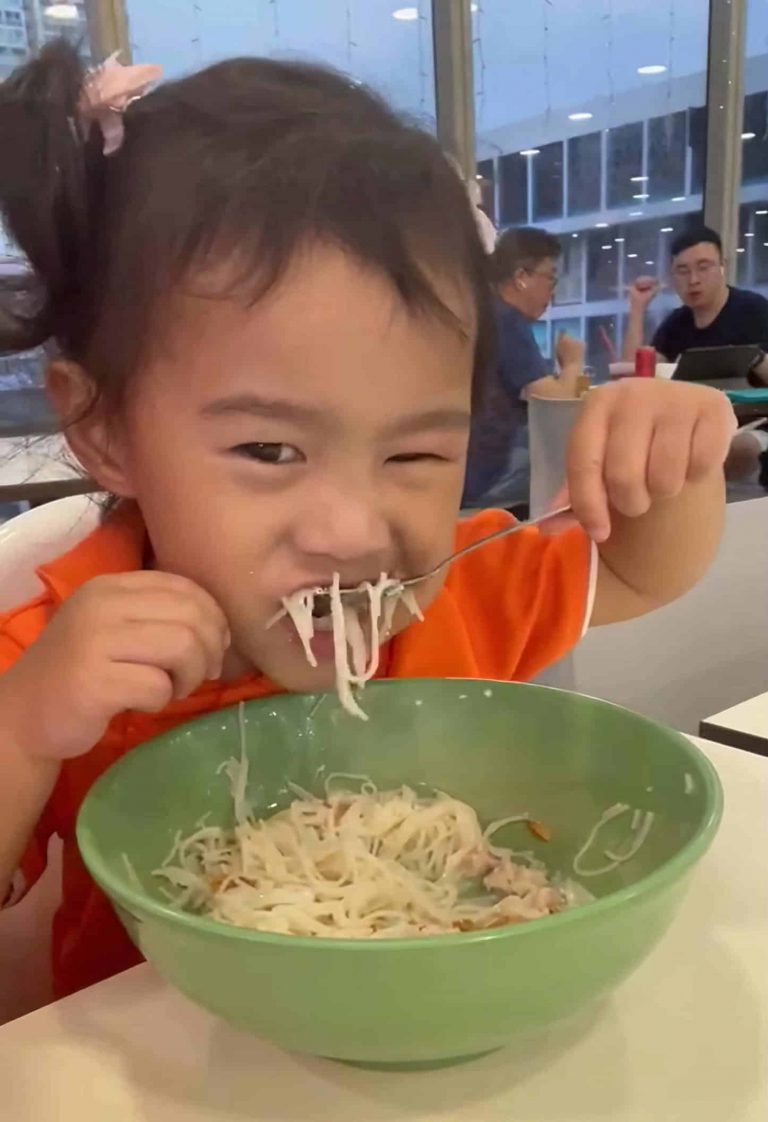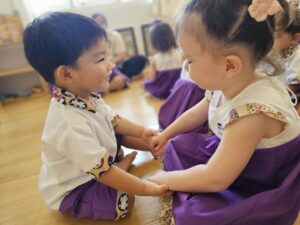The popular saying, ‘The family that eats together, stays together,’ is advice for the ages. Having meal times together promotes bonding between family members as they catch up on each other’s day and activities.

Did you ever eavesdrop on your parents during mealtimes as a child? It is important to note that our children are observing us all the time, even during mealtimes. We as adults need to role model appropriate behaviour, whether it is interacting with each other to table manners.
Meal times are a wonderful opportunity for children to exercise their independence, whether it’s choosing which dishes they’d like to eat or setting up the table. Other concepts they are able to pick up include subtle observations about their food – the quantity of food they can manage to eat, the feel of the texture of the food in their mouth, or even observing their parents’ eating habits!
“We must understand that anything which animates the child is a help to his development.”
– Dr. Maria Montessori


Introducing a child to eating independently does not only start and end with handing a child a plate/bowl and utensils. It begins with exposing your child to anything pertaining to food, whether it’s going to the supermarket to do your marketing or even food play.
Encourage your child to explore real food, preferably dry foods such as rice, potatoes, etc., as these can be washed thoroughly and still be consumed afterwards. This, in turn, creates a sensory connection between the child and food.

Other learning outcomes, such as fine motor skills development, simple mathematical concepts, etc., can be achieved as well through exploration. Simple water play using their bottles can also familiarise children with the act of drinking water.

When you’re eating out, further the experience by having your child look through the restaurant’s menu and pick out certain pictures that interest them. This could be an interesting conversation starter!

We must help children from the very beginning. We must give them the right environment because they have to adapt themselves to a strange new world.
– Dr. Maria Montessori
All this begs the question: So when is my child ready to eat on his/her own?
Well, the answer is … whenever you’re ready! Children learn best through exploration, through trial and error, and especially through accidental or impromptu experiences. It is best to start children eating with their hands to continue the food play experience from before. This furthers their connection and relationship with food. Don’t be afraid of the mess made, as cleaning up is also part of the process.

Always keep in mind that children learn and progress through a gradual experimentation. Before long, they’ll be eating entirely on their own and having their own opinions in conversations at meal times!









